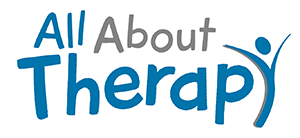A transition is a short period of time when moving from one activity to another. There are many transitions throughout a child’s day. Transitioning from asleep to awake, transitioning from home to school, and transitioning from a preferred activity to a non-preferred activity, to name a few. There is no doubt that a parent could use transition strategies for children.
A child struggling with transitions can respond with undesired behaviors. In some cases, it might be clear what is triggering the behaviors but in many situations, it won’t be obvious. There are many behaviors that can be manifested due to a challenge with transitions, some of the main ones can include:
- Tantrums and meltdowns
- Crying and yelling
- Resistance
- Frustration
- Confusion
- Avoiding the situation or task at all cost
OT is able to assist in many situations, especially when a child is exhibiting behaviors outlined above when transitioning. Treatment with occupational therapy can make a dramatic difference in your child’s symptoms.
For more information on how OT may be able to help your child, please feel free to reach out to us by calling (919) 448-6018, contact us through our web form or start a chat with us in the bottom right of the website.
We have a free report, “5 Transition Strategies to Help Avoid Meltdowns and Increase Cooperation”, that you can download here.
Transition Strategies for Children Case Study
Our pediatric occupational therapists travel to your child to provide services in their natural environment or perform services over teletherapy. In this case study, read one example of how we were able to help a child through the use of transition strategies.
A little boy (22 months old) that Courtney (an All About Therapy OT) recently worked with was going through a significant transition in his life. His mom was pregnant with his baby sister and he lacked the communication skills to adequately express his needs. This often resulted in extreme tantrums. He would arch and throw himself around the room, unable to be soothed by Mom.
Courtney decided that the DIR Floortime approach would work best. This approach involved meeting Thomas where he was, coming to his level and doing what interested him. For the first few sessions, Courtney’s primary goal was to gain his trust. They would spend most of their time playing with magna-tiles as this was a preferred activity for Thomas. After gaining his trust, Courtney was able to begin working on creating smoother transitions.
The following are some examples of the techniques that Courtney and his parents used to help with easing his fear of transitions:
- Provide a verbal warning before beginning the transition. For example, “In 5 minutes, we are going inside to prepare for lunch”.
- Allow him to choose between two non-preferred activities when it is time to end a preferred activity. “Thomas, it is time to be all done with magna-tiles. Would you like to paint a picture or read a book?”.
- Use a transition object. Allow Thomas to take a special toy from home in the car on the way to daycare.
- Sing a song. The cleanup song works well to transition kids away from a preferred activity.
- Be consistent. We used a variety of techniques to ease transitions, but we always used at least one technique.
Once Thomas knew what to expect during transitions, he became less fearful and more compliant. His tantrums reduced dramatically. Mom would carry over techniques and strategies on the days when Courtney was not there and then report back to Courtney during the next session on successes and failures. This was an integral part of Thomas’ therapy, and why he progressed so quickly.
After about 5 months of treatment, the family moved away but felt confident in carrying out their new strategies on their own and did not feel as though they would need to seek out occupational therapy services once they moved.
Mom provided this feedback from her time with Courtney and All About Therapy:
“It is not an exaggeration to say that All About Therapy, specifically Courtney, changed our child’s life! I highly recommend Courtney. She is extremely passionate and knowledgeable. She went above and beyond for us several times, always answering my questions and providing tips and tricks for our specific situation. It was clear to me that our child was receiving personalized, well-thought-out therapies. It’s no surprise that our toddler made incredible strides very quickly. This meant increased calm and happiness for the whole family, but more important, our child is a happier and more confident toddler now.
On the administrative side, everyone I spoke with at All About Therapy made scheduling, billing, etc., smooth and seamless. This means a lot when you are a parent juggling multiple therapies, appointments, bills, etc.”
Could transition strategies for children help you to avoid meltdowns and increase cooperation with your child? Click here for 5 Transition Strategies to Help Avoid Meltdowns Increase Cooperation.
Get more tips, interact with our OT’s and connect with other parents by joining our Facebook Group Here.

